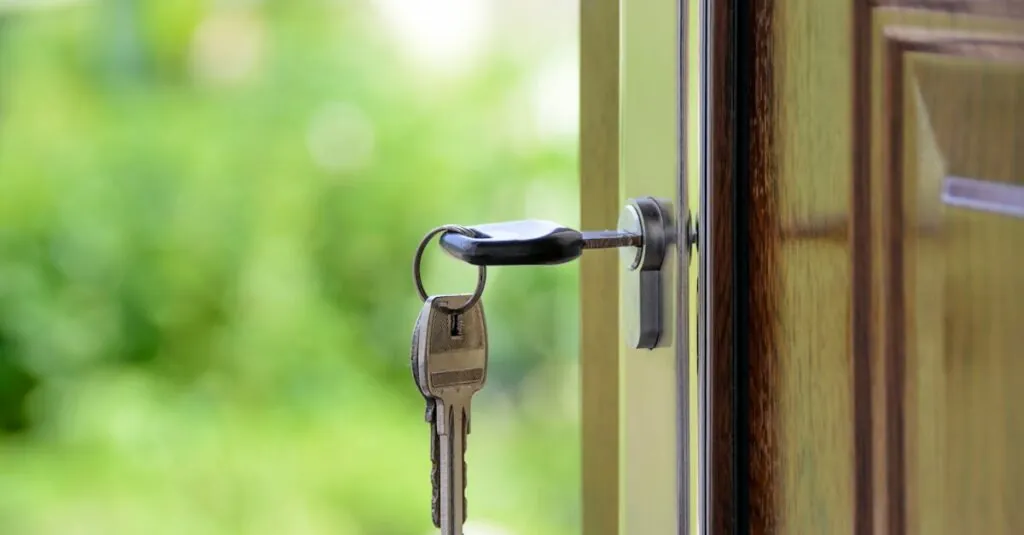Table of Contents
ToggleIn a world where energy bills can feel like a second mortgage, the FHA energy-efficient mortgage is a breath of fresh air. Imagine upgrading your home without breaking the bank—sounds like a dream, right? With this innovative financing option, homeowners can roll the cost of energy-efficient improvements into their mortgage. Yes, you heard that right! Now you can finally swap that ancient furnace for a snazzy new one while keeping your budget intact.
But wait, there’s more! This isn’t just about saving money; it’s also about saving the planet. By investing in energy-efficient upgrades, homeowners not only lower their monthly expenses but also reduce their carbon footprint. So, if you’re ready to turn your home into an eco-friendly haven while keeping your wallet happy, the FHA energy-efficient mortgage might just be your new best friend.
Overview of FHA Energy-Efficient Mortgage
The FHA energy-efficient mortgage (EEM) offers a unique financing option designed for energy improvements in residential properties. Homeowners can include costs for energy-efficient upgrades in their home loans. Financial assistance makes it easier to implement green technologies, contributing to lower utility bills.
This mortgage option supports various energy-saving projects, such as HVAC upgrades, insulation improvements, and window replacements. Specifically, these projects can enhance residential energy efficiency, translating to reduced monthly expenses. Notably, the program encourages homeowners to invest in sustainable practices without facing significant financial burdens.
Lenders often view the FHA EEM as a secure investment due to its potential for long-term energy savings and increased home value. Borrowers benefit from streamlined processes, making it easier to qualify while ensuring access to the necessary funds for energy improvements.
When considering the FHA EEM, homeowners should assess their energy requirements thoroughly. By engaging with lenders familiar with the program, they can secure favorable terms tailored to their needs. Understanding the eligibility criteria and available funding limits ensures that homeowners maximize the benefits of this mortgage option.
Overall, the FHA energy-efficient mortgage aligns with the growing demand for sustainable housing solutions. It serves as an effective tool for enhancing property value while promoting environmental stewardship.
Benefits of FHA Energy-Efficient Mortgage
FHA energy-efficient mortgages offer several advantages for homeowners. These benefits enhance financial savings while promoting eco-friendly improvements.
Lower Interest Rates
Lower interest rates are a significant benefit. FHA EEMs often feature reduced rates compared to conventional loans. Lenders provide these lower rates due to the energy efficiency improvements, which reduce long-term financial risks. Borrowers gain the advantage of smaller monthly payments, maximizing savings over time. The potential for substantial interest savings often leads to better budgeting options. Ultimately, choosing an FHA EEM can lead to considerable financial benefits, enabling homeowners to invest in sustainable projects confidently.
Potential for Higher Loan Amounts
Potential for higher loan amounts is another key feature. With FHA EEMs, borrowers can finance energy-efficient upgrades as part of their mortgage, increasing the overall loan limit. This option allows homeowners to secure additional funds for renovations without incurring separate personal loans. The increase in available financing supports comprehensive energy-saving projects, enhancing a home’s overall efficiency. Homeowners benefit from the ability to make substantial improvements while keeping financial stress low. This benefit aligns well with homeowners eager to modernize their properties while enhancing energy savings.
Eligibility Criteria
Understanding the eligibility criteria for the FHA energy-efficient mortgage ensures borrowers can maximize benefits. Specific requirements must be met to qualify for this innovative financing option.
Borrower Requirements
Homeowners must demonstrate creditworthiness to qualify. A minimum credit score of 580 is typical for obtaining the FHA EEM. Income verification plays a significant role, as lenders assess it to evaluate the borrower’s ability to repay. Additionally, lenders often require proof of employment and consistent income over the past two years. Borrowers must also provide necessary documentation to support their application. Engaging with experienced lenders can also facilitate a smoother approval process.
Property Standards
Properties eligible for the FHA EEM must meet specific criteria set by the Federal Housing Administration. The home must be a primary residence, ensuring that the borrower occupies it. To qualify, the property should undergo an energy audit performed by an approved professional. Lenders may also expect homeowner upgrades to adhere to guidelines established by FHA Requirements. Energy-efficient improvements must provide measurable energy savings and typically include insulation, HVAC systems, or energy-efficient windows. Properties meeting these standards can access enhanced financing options.
How to Apply for an FHA Energy-Efficient Mortgage
Applying for an FHA energy-efficient mortgage involves several key steps and specific documentation. Understanding these elements ensures applicants navigate the process smoothly.
Required Documentation
Documentation plays a crucial role in the application process. Applicants must provide proof of income, such as recent pay stubs or tax returns. Lenders require a minimum credit score of 580, so credit reports also need submission. A detailed energy audit report is essential to demonstrate proposed improvements’ effectiveness. Reports from approved professionals validate the energy-saving measures planned. In addition, personal identification and residence information must accompany the application.
Steps in the Application Process
The application process unfolds in several organized steps. Start by selecting an FHA-approved lender specializing in energy-efficient mortgages. Next, submit required documents to initiate the approval process. An energy audit must occur to highlight necessary upgrades and their projected savings. Once all documentation is complete, lenders review applications and determine eligibility. After approval, homeowners can finalize the loan and begin implementing energy-efficient upgrades. Regular communication with the lender helps address any issues promptly, streamlining the entire process.
Common Misconceptions
Many believe that the FHA energy-efficient mortgage focuses solely on new construction. It actually applies to existing homes as well, allowing homeowners to improve energy efficiency regardless of when the house was built. A prevalent misconception suggests that only certain upgrades are eligible for financing. In reality, improvements ranging from HVAC systems to insulation can qualify for funding under the program.
Some think repair costs should be covered in addition to energy-efficient improvements. While the EEM prioritizes energy upgrades, it does not cover general repairs or maintenance. Applicants might assume that qualifying for this mortgage is overly complicated, but the process is often streamlined, especially for borrowers working with knowledgeable lenders.
Another common belief is that energy audits are optional. Energy audits are, in fact, a critical requirement, as they assess the potential savings from proposed upgrades. Many homeowners feel they cannot afford upfront costs related to these audits and improvements. The FHA EEM provides an opportunity to include these expenses within the overall mortgage, alleviating financial strain up front.
Uncertainty also exists regarding the loan limit. The FHA EEM allows for increased loan amounts specifically for energy-efficient upgrades, making it possible to finance significant enhancements. Potential borrowers may doubt they will see immediate savings after implementing changes. Studies indicate that energy-efficient improvements often lead to noticeable reductions in utility bills, offering financial relief nearly right away.
Assumptions about credit score requirements can discourage applications. While a minimum score of 580 is necessary, borrowers with higher scores may benefit from even better terms. Understanding these aspects can dispel myths surrounding the FHA energy-efficient mortgage, clarifying its real advantages for homeowners.
The FHA energy-efficient mortgage offers a valuable opportunity for homeowners looking to enhance their properties while promoting sustainability. By integrating energy-efficient upgrades into their mortgage, they can enjoy reduced energy costs and contribute to a greener environment. This financing option not only supports various improvements but also provides a streamlined process for qualifying borrowers.
With favorable terms and the potential for increased home value, the FHA EEM stands out as a smart choice for those ready to invest in their homes. Engaging with knowledgeable lenders and understanding eligibility criteria can help homeowners navigate the process effectively. Embracing the FHA EEM is a step toward a more energy-efficient future while ensuring financial stability.







